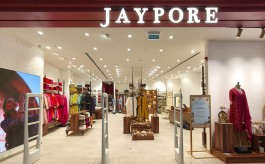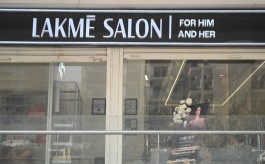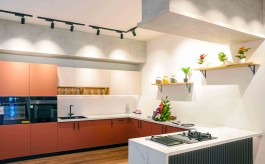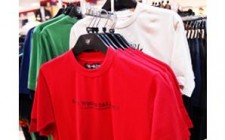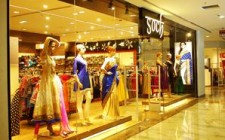An in-store affair
Vjmedia Works | October 13, 2014
To deliver a superior experience to the omni-channel shopper, retailers need to align a rich front-end experience with an integrated back-end infrastructure
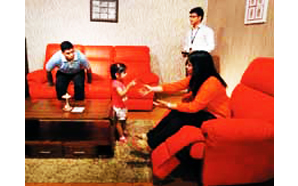 Here's just a snapshot of what a shopper dropping by at
British luxury fashion house Burberry's 27,000-square-foot flagship store on
Regent Street in London can expect. There are radio-frequency identification (RFID)
chips embedded in certain items of clothing and accessories so that when a
customer approaches one of the screens in the common areas or in a fitting
room, she is greeted with custom content - say, information about a bag's
stitching and craftsmanship, or a video showing how a trench coat was worn on
the catwalk. The chips are attached before products leave manufacturing centres
to assist with inventory tracking and management.
Here's just a snapshot of what a shopper dropping by at
British luxury fashion house Burberry's 27,000-square-foot flagship store on
Regent Street in London can expect. There are radio-frequency identification (RFID)
chips embedded in certain items of clothing and accessories so that when a
customer approaches one of the screens in the common areas or in a fitting
room, she is greeted with custom content - say, information about a bag's
stitching and craftsmanship, or a video showing how a trench coat was worn on
the catwalk. The chips are attached before products leave manufacturing centres
to assist with inventory tracking and management.
Too fancy? Not really, it's just one of the new capabilities brick-and-mortar retailers are deploying to deliver a superior point-of-service experience to the omni-channel shopper.
The point is, in every category of products today the tension between the manufacturers and the two retail channels -brick and mortar and online - is mounting. While on the one hand retailers and distributors are struggling to save their shrinking margins, on the other hand, in absence of the visual stimuli of physical stores, online players along with the manufacturers are trying to figure how to create the right consumer experience. Even when marketers overhaul their communication strategies to catch the consumer's attention even for a split second, the new generation consumer has started sabotaging any attempt at engagement, whether online or offline.
In this scenario, if a customer spares even a few minutes to visit a brick-and-mortar store, the company behind it must see this as a huge favour. More importantly, consumer brands should take every footfall as an opportunity to create an unforgettable experience. This is because the old notion of a linear customer journey has been splintered by the plethora of choices available today. "Every transaction online or offline has a distinctive experience built into it. This plain fact is often missed by companies," says Lucy Unger, managing director (South Asia), at global retail and brand consultancy Fitch Design.
A different route
Retailers are taking two approaches to make the point-of-sale experience unforgettable - by upgrading the ambience at the physical stores, and also by setting up dedicated try-before-you-buy (TBYB) shops. The second category comprises outfits where you go and experience products, no strings attached. In fact, some of these outlets don't have the mechanism to process a buy request. It is not a big trend yet but it is a significant addition to the retail environment because it represents two major developments. One, the growing tension between manufacturer and retailer brands (private labels), where we see both brick and mortar and e-retailers pushing their own products at the detriment of national brands. A dedicated TBYB store helps a national brand reach the buyer directly with a better-trained sales force. Two, these are also seen as a reaction to the try and buy option many e-retailers are promising. But in most cases e-retailers have restricted the exercise to select product categories and to select pin codes. The other point to note is that while the whole idea originated in the luxury category (Miele for instance), over time it has percolated into more mass categories like say, paints and even kitchen and bathing products.
Take Asian Paints for which the decision to unveil experience zones was more strategic - it had to create excitement in a largely low involvement category. The journey began almost a decade ago following a major shift in its communication strategy. Back then and even now, Indian consumers find the chore of painting their houses quite daunting. The real problem exists right at the start of the procedure. Consumers prefer to rely on the wisdom of a contractor. Asian Paints decided to educate the consumer about the pitfalls of this disengagement - the contractor may not understand what you need or require or even jack up the prices to keep a higher margin for himself -through its advertisements and experience centres. To begin with there was no roadmap for the experience centres and the brief the company had for its design agency was "make our stores look nicer".
Over a period of time, Asian Paints along with its design partner Fitch Design, saw a huge opportunity in this project. Asian Paints came up with two sprawling experience centres at Bandra in Mumbai and Connaught Place in Delhi in 2008 and 2012, respectively. People walking at both the experience centres go through an experience that instills 'colour confidence'. Says Lucy Unger of Fitch Design, "The staff at stores was briefed not to pester customers with aggressive sales tactics. At the same time, we asked them to ensure that customers should leave the stores with a roadmap." Interestingly no advertising campaigns were executed to create buzz about the two experience centres this time. Within six months, sales of surrounding cluster of stores near the experience centres went up by 35 per cent. "The shelf life of an experience centre is not more than five years. So you need to refresh the store at the right time," adds Unger.
For its part, Kohler, the US-based manufacturer of plumbing products, targets two set of consumers through its experience centres. While the first set comprises commercial and residential real estate developers and architects, the second set is end consumers. In India, Kohler is present across 260 single and multi-brand stores. Of this, 100 stores have what the company calls 'Experience Islands'. These mini experience zones are spread in an area of 25 to 100 sq ft. Says Salil Sadanand, managing director, Kohler India, "These experience zones are in line with our global strategy. While operating in a low-involvement category like bath products, creating the right experience is crucial because nearly all the consumers walking into your stores come with the intention of buying."
Kohler has worked hard to ensure the customer encounters the right experience at the store. For instance, audio-visual is a key element of Experience Islands. Store staff is trained for seven days every month about new launches and on ways to push the existing range. The company tracks the performance of its Experience Islands through a matrix based on product specification, sales and brand image.
Kohler has ambitious plans for its experience zones. It feels the shop in shop format is not enough to showcase its entire range. So the company is setting up an entirely new channel of exclusive experience centres that will be spread over 5,000 sq ft floor space.
Even players for whom experience zones haven't worked seem to be rooting for the idea. Manish Sharma, managing director, Panasonic India, which has closed down its two experience centres, says, "Whatever experience a retailer creates must ease purchase decisions made by consumers." In 2011, Panasonic invested in two large format experience centres in Gurgaon and Mumbai for its B2C and B2B products. Besides displaying its entire product portfolio including niche products related to security and surveillance, Panasonic looked at these stores as points to create consumer engagement. The calendar for these engagement activities was set by the store staff in advance. For instance, weekly cookery classes were held with housewives as participants using Panasonic's cooking range to prepare dishes.
Both the experience centres were shut down last year. Says Sharma, "In the electronics category, it makes sense to invest in experience centres when a company has a new range of products to offer."
It doesn't have to be fancy
Deploying state-of-the-art technology (like Burberry does) is not the only way to ensure an unforgettable consumer experience. The key is understanding what the shopper wants.
Take apparel for instance. Retailers often forget that fitting rooms are the places where a lot of decisions are made. In fact, a survey by Envision Retail substantiates this insight. Of 8,000 apparel shoppers who participated in the survey, 71 per cent who tried on clothes in fitting rooms bought something. Only 10 per cent of those who did not use fitting rooms ended up buying something. The idea is to give the shopper the time and space to make up her mind.
Some e-retailers are looking at experience centres as a tool to deal with the last vestiges of consumer resistance - that need-to-be-sure-before-putting-down-the-money feeling. Gurgaon-based furniture and home decor company FabFurnish operates four large format experience centres across the national capital region and in Bangalore. Each experience centre is spread over 5,000 sq ft and is fitted with touch screens with catalogues besides displaying some of the products listed on the site. Says co-founder Vikram Chopra, "Our experience centres are meant to build confidence in shoppers who are serious about buying high-ticket items. The experience centres have also triggered sampling." The company claims that its website gets 2 lakh visitors every day. Chopra believes even if 5 per cent of these people make it to the experience centres, his job is done. "Currently each store is bringing in attributed sales of Rs 70 lakh a month," he adds. Going forward, the company plans to invest in high streets and in furniture hubs like Greater Kailash and Kirti Nagar in New Delhi.
Eyewear brand Lenskart is using its experience zones to create awareness about the category. The company has so far focused on building small physical stores of not more than 200 sq ft in 30 smaller cities and towns like Mangalore, Kolhapur, Nagpur and Agartala among others. Says CEO and co-founder Peyush Bansal, "These stores allow us to manage our pre- and post-sales activities like building consumer confidence and after-sales services. This is because in smaller cities people take time to warm up to shopping online for certain categories of products." Each of its stores has two touch screens on which shoppers can place their orders after trying on the lenses and frames on offer.
Lenskart, which started investing in physical stores six months back, claims that 10 per cent of its overall orders come from physical stores with an average ticket size of Rs 2,000.

 5 things to avoid if you wish to create
lasting consumer experiences: Lucy Unger
5 things to avoid if you wish to create
lasting consumer experiences: Lucy Unger